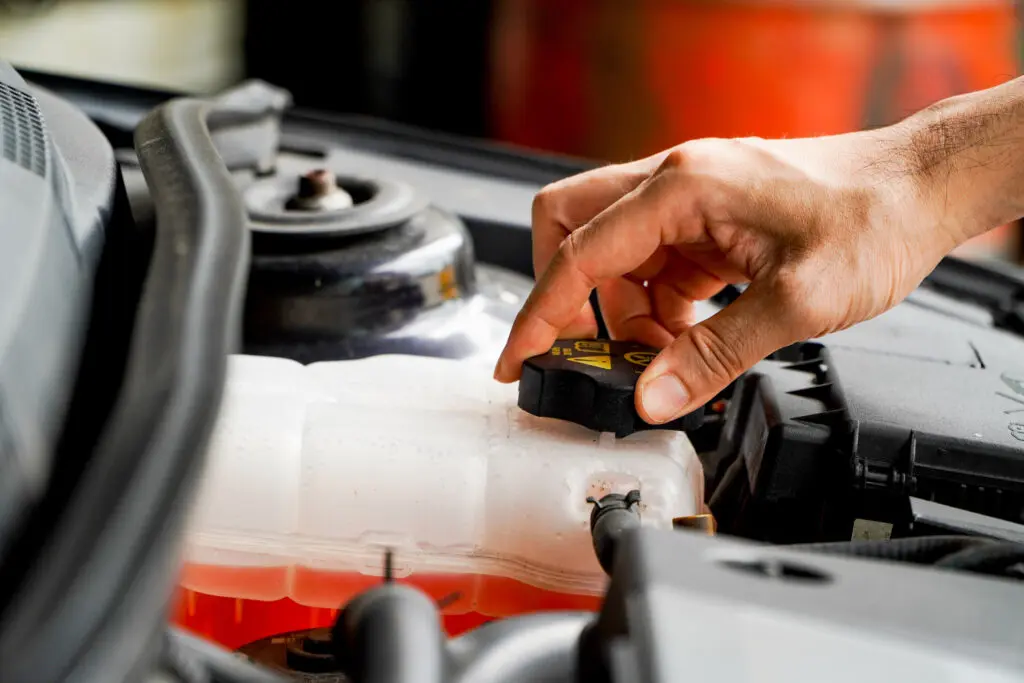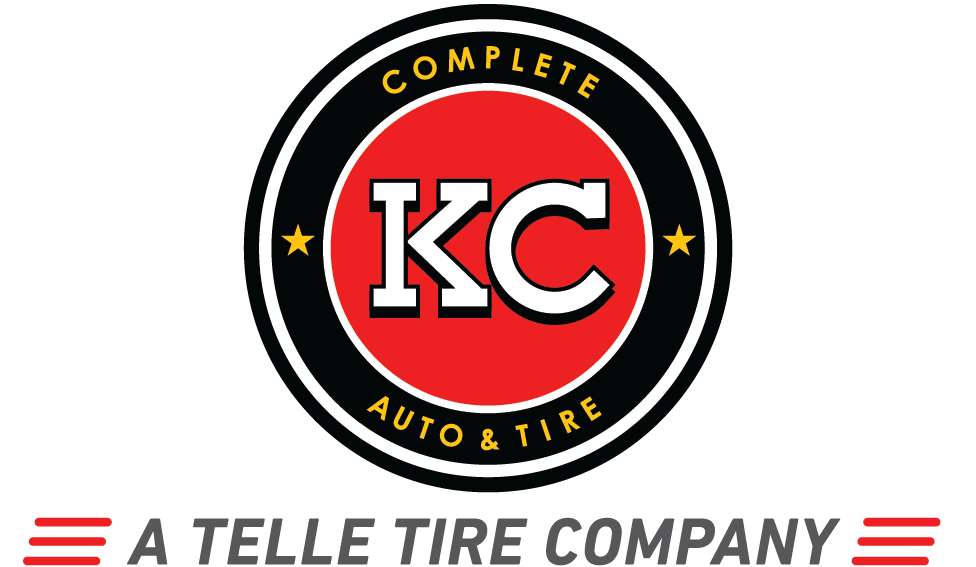Winter Car Maintenance Checklist
Winter is upon us and as the weather continues to get colder and the roads begin to become a bit more treacherous, it’s time to ensure your vehicle is prepared. Cold weather can be harsh on vehicles and combined with holiday travel and worsening road conditions, it makes winter vehicle maintenance absolutely essential for your safety. Ensure your vehicle is ready to take on winter driving with our winter car maintenance checklist, then visit your nearest Telle Tire location for comprehensive auto service.
Get Your Vehicle Ready for the Cold
Ensuring you’ve completed the winter car maintenance checklist is essential. Over the winter season, you experience weather changes from snow and ice to wind, increased driving, long road trips to visit family or go on vacation, driving through traffic to see fun holiday displays, and more. Be sure you cross off each of the items below to keep your vehicle running this season.
Check the Oil and Other Engine Fluids
Obviously, oil and other engine fluids are essential to a well-performing vehicle. First and foremost, you want to do what you can to prevent ending up on the side of the road in freezing cold temperatures. Ensure your transmission, brake, and power steering fluids are all at or above the minimum levels required for safe driving. Antifreeze is a must as it prevents water within your engine’s cooling system from freezing. You also need to check your engine’s coolant level within the overflow tank while the engine is cold as it will help maintain the capability of your antifreeze.
Oil becomes an issue during winter as the cold weather can thicken it, reducing its ability to circulate effectively through the engine. Fresh oil will help prevent this from happening, and other approaches like swapping to a synthetic or synthetic blend during the winter can be done, but only if right for your car. Your mechanic will be able to help you make this decision.

Check Engine Belts and Hoses
Colder temperatures can weaken the belts and hoses in your engine. You can keep your engine running by checking ahead for any cracking, fraying, leaking, loose clamps, or signs of wear and tear. Squeeze all of the hoses and if any feel brittle or excessively spongy, replace them right away. If your vehicle is equipped with a newer, multi-rib “serpentine” belt, the materials won’t show obvious signs of wear, but it’s recommended to replace these every 60,000 miles.
Check the Tire Pressure and Condition of Treads
Your engine could be in tip-top shape, but if your tires aren’t prepared to handle the winter conditions, you could still find yourself slipping and sliding off the roadway despite safe driving practices. Keep an eye on your tire pressure with a check at least once a month as cold weather will cause the air pressure to drop roughly 1 PSI every 10 degrees (Fahrenheit). Your vehicle’s owner’s manual will have your recommended tire pressure, or it may be listed just inside your driver’s side door. Be sure you’re also up-to-date on your tire rotation and don’t forget to check your spare!
Your tire’s tread is necessary for traction, but if the tread is low or unevenly worn, driving in wet or slippery conditions can become even more dangerous. If you usually see a lot of snow, you may want to consider investing in a set of winter tires.
Swap to Winter Tires
If you live in an area that has particularly bad roads during winter, or want better traction throughout the season, swapping your tires to specially designed winter tires may be right for you. Utilizing a specialized rubber, winter tires grip the road better than performance or all-season tires. This is due to their ability to remain flexible, even when temperatures drop below 40?. Additionally, the deep, wide, jagged treat patterns and gripping edges move precipitation away to maintain traction. Overall, winter tires help provide an extra layer of safety for your winter commutes or family travels, providing more control in adverse weather conditions.
Should you decide to install winter tires on your vehicle, it’s essential that you only do so at the right time. Once the temperatures at nighttime and in the early morning hours stay at or near 40?, it’s okay to make the switch. Driving on winter tires consistently in warmer temperatures will cause them to wear out faster.
If you decide to purchase snow tires, be sure to purchase a full set of four as driving on mismatched tires can be dangerous and bad for your vehicle. There are various types of winter tires available, so consult with your local Telle Tire to choose the right ones for your vehicle and driving needs.
Ensure All Exterior Lights are Properly Functioning for Visibility
The days are shorter and the nights are longer, making it more necessary than ever to ensure your vehicle is visible at all times on the road. Check that your headlights, taillights, brake lights, turn signals, backup lights, and emergency flashers are all working as they should. If any of the bulbs are burnt out, replace them right away. Also, don’t forget to give the lenses on your lights a good cleaning so they shine as brightly as they can.
Check the Wiper Fluid and Condition of Wiper Blades
Your windshield wipers get put to the test through the winter, clearing away melting snow and ice or keeping your windshield clear from the water and snow-melt solution kicking up from the car in front of you. If you’ve ever found yourself in a situation of having a blurry windshield and running out of wiper fluid, you know how important it is to have functioning wiper blades and full wiper fluid. For winter, purchase freeze-resistant wiper fluid and use rubber-clad blades to help prevent ice buildup. To take some of the work off your wipers, be sure to keep a quality ice scraper and snow brush in your vehicle throughout the winter.
Check the Battery
Have you ever had a vehicle that just refused to start in cold weather? When it’s extremely cold, the car requires more current from the battery to be able to start the engine, meaning the car battery itself is working harder in the winter to get your car up and running. An experienced mechanic can test your battery to verify it’s fully charged, or help you replace it if necessary.
Test the Heater and Window Defroster
When you get into your vehicle, you more than likely want to warm up as quickly as possible, and you need your windows to be clear for excellent visibility and safety. Before it gets too cold, test your vehicle’s heater. If it feels like it’s not getting quite as warm as it should bring it to a trusted mechanic for repairs. Your air conditioner also needs to be functional because it’s going to be essential to your window defroster, so if you put off that repair during summer or fall, it’s time to get it repaired.
Protect the Vehicle’s Exterior
Salt and other snow-melt road treatments are great for keeping the roads free from dangerously slippery conditions, but they can wreak havoc on your vehicle’s paint and exterior. When there’s no inclement weather, give your vehicle a good cleaning and help protect the paint by waxing. It will help make cleaning the salt and treatments off your vehicle easier and prevent them from penetrating the surface and doing damage.
Create a Car Emergency Kit – And Keep in Your Vehicle All Season
Sometimes, despite your best maintenance efforts, things happen that can put you on the side of the road. It’s crucial to create a winter car emergency kit that will have you prepared for any event. Use the checklist below to ensure you have everything you need in your vehicle to stay safe all winter long.
At a minimum, your emergency kit should include:
- Bottled drinking water
- First-aid kit
- Non-perishable snacks (if you frequently travel with a pet, pack some for them, too!)
- A bag of abrasive material (like sand, salt, or cat litter) or traction mats to help get out of a slippery spot
- Snow shovel
- Items for warmth like blankets, gloves, hats, and scarves
- Flashlight and extra batteries
- Ice scraper and brush
- Jumper cables
- Warning devices such as flares or triangles
- Basic toolkit that includes screwdrivers, pliers, and an adjustable wrench
Don’t Get Stuck in the Cold – Prepare Your Vehicle for Winter with Telle Tire
Ensure you and your family enjoy all of the driving adventures you’ll have this season by preparing your vehicle for intense winter weather. Whether you need tires in the St. Louis area or Kansas City, et your car in tip-top shape for winter and beyond by bringing it to the professionals at Telle Tire.
Check off all the necessary boxes to take on winter safely. View and print our handy winter maintenance checklist to ensure your vehicle is ready.
Contact us for all of your vehicle maintenance and tire needs, and visit a location near you today.


